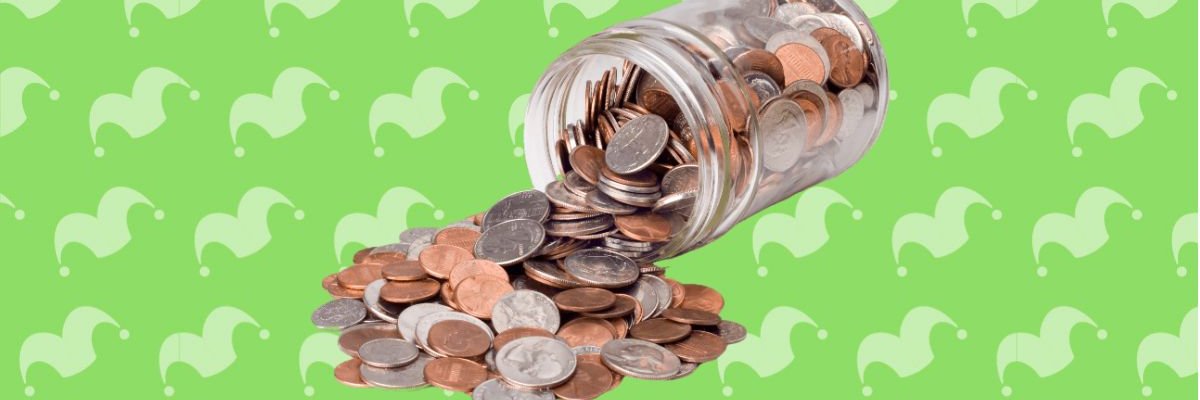Procrastinating on Opening a HYSA? You Might Regret That
KEY POINTS
- If the Federal Reserve cuts the federal funds rate later this year, APYs on savings accounts will fall.
- My own HYSA's APY has decreased from 4.35% to 4.20% in recent months.
- If a HYSA isn't for you, a money market account or CD might be a better fit.
Have you opened a high-yield savings account (HYSA) yet? Savings account research from The Motley Fool Motley Fool Money from last year found that just 31% of Americans have an account paying an (annual percentage yield) APY of 4.00% or higher. Earning a substantial APY on your savings is a great way to make passive income and ensure your money doesn't lose value due to inflation.
Speaking of inflation, that's the reason we're seeing APYs in the 4.00% and 5.00% range these days. The Federal Reserve raised the federal funds rate 11 times between 2022 and 2023 to address sky-high inflation. But as of the last Consumer Price Index report, inflation stood at 3.4% -- a far cry from its peak of 9.1% in June 2022.
So the Fed might be lowering that rate later this year. And since the APYs banks offer tend to be influenced by the federal funds rate, we're already seeing savings accounts rates start to fall. Read on for my own experience, as well more information about bank account options that pay solid APYs.
My HYSA's rate has already fallen
I opened my high-yield savings account a little over two years ago, and in that time, I watched its APY soar to a height of 4.35%. Unfortunately, in the last few months, that rate has inched downward, and I'm currently earning 4.20% on my savings. I was fortunate enough to spend the last year and a half padding the account in preparation to buy a home and watched the interest I earned on it mount over time.
So seeing the rate fall a little bit now isn't a tragedy. I benefited from that higher rate for a long time, and I reaped the rewards in the form of passive interest income that landed in my account every month.
And I know I'm not alone in seeing a lower rate now -- data from the FDIC shows that as of April 15, the average rate for all savings accounts was 0.46%. But a few months prior in January, that number was 0.47%. This isn't a huge change -- but neither was the loss of 0.15% from my account's APY. (And incidentally, that low average also reflects the many big banks that pay just 0.01% on savings accounts -- which should help convince you that opening a HYSA at 4.00% or better as soon as you can is a good idea.)
Is a HYSA right for you?
Honestly, I don't think there's anyone who couldn't benefit from a high-yield savings account -- they're easy to open, easy to use, and the best ones come without pesky maintenance fees. The one fly in the ointment for many HYSAs with online banks is difficulty accessing your cash -- you'll likely have to transfer it to a checking account either with that bank or another, then take it out. But maybe you want more features than a HYSA can offer you, while still getting to take advantage of the higher APYs we're currently enjoying. Consider these accounts instead.
Money market accounts
If the thought of being unable to access your savings without jumping through additional hoops is keeping you from opening a HYSA, how about a money market account instead? These are interest-earning accounts that have features of both checking and savings accounts. You get the higher interest rate of a HYSA (and the limited number of transactions allowed per month under Regulation D rules). But you also get access to your money via check-writing privileges or even an included debit card.
So if you need to dip into your savings to cover a bill or make a purchase, there are no extra steps required -- write a check or whip out your debit card. You might have to open an MMA with a higher deposit or maintain a certain balance in the account, however -- this makes them less ideal for people who are just getting started with building savings.
Certificates of deposit (CDs)
Let's say you've got a pool of cash saved for a certain deadline -- maybe a home purchase in two years. If you want to earn a set interest rate on it without putting it at risk of loss in the stock market (short-term investing can be unreliable), a 2-year CD might just be perfect for you. When you open a CD, you agree to lock up your money for the duration of the term (typically three months to five years, but you can find shorter and longer ones out there) in exchange for earning that fixed interest rate.
That can be a double-edged sword -- the threat of early withdrawal penalties might be enough to compel you to leave the cash alone, but if you need the money for an emergency, it stinks to pay a penalty to take it out. For this reason, CDs might also not be the best fit for beginning savers -- they can be a good option if you won't need to add to the money in the account or take any of it out during the term, though.
No matter your savings goals -- be it to build savings, access cash, or lock money up for a predetermined length of time -- you have several excellent types of bank accounts to choose from. And thanks to that higher federal funds rate we talked about, many high-yield savings, money market, and CD accounts are paying around 5.00% right now. Don't delay -- explore your options today!
Our Research Expert




